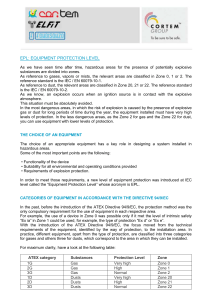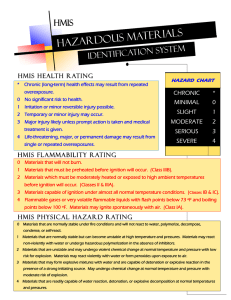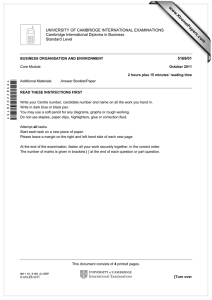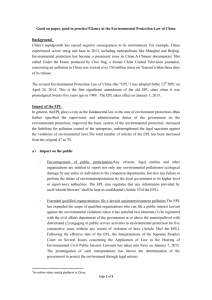The single protection method accepted in Zone 0 is intrinsic safety
advertisement
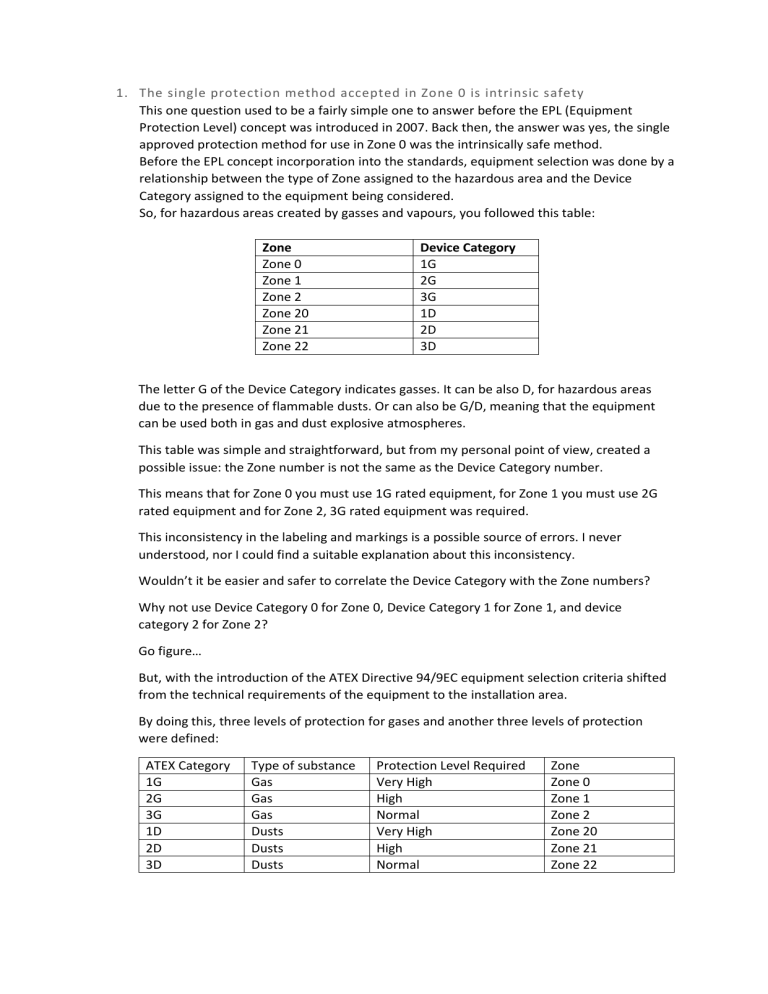
1. The single protection method accepted in Zone 0 is intrinsic safety This one question used to be a fairly simple one to answer before the EPL (Equipment Protection Level) concept was introduced in 2007. Back then, the answer was yes, the single approved protection method for use in Zone 0 was the intrinsically safe method. Before the EPL concept incorporation into the standards, equipment selection was done by a relationship between the type of Zone assigned to the hazardous area and the Device Category assigned to the equipment being considered. So, for hazardous areas created by gasses and vapours, you followed this table: Zone Zone 0 Zone 1 Zone 2 Zone 20 Zone 21 Zone 22 Device Category 1G 2G 3G 1D 2D 3D The letter G of the Device Category indicates gasses. It can be also D, for hazardous areas due to the presence of flammable dusts. Or can also be G/D, meaning that the equipment can be used both in gas and dust explosive atmospheres. This table was simple and straightforward, but from my personal point of view, created a possible issue: the Zone number is not the same as the Device Category number. This means that for Zone 0 you must use 1G rated equipment, for Zone 1 you must use 2G rated equipment and for Zone 2, 3G rated equipment was required. This inconsistency in the labeling and markings is a possible source of errors. I never understood, nor I could find a suitable explanation about this inconsistency. Wouldn’t it be easier and safer to correlate the Device Category with the Zone numbers? Why not use Device Category 0 for Zone 0, Device Category 1 for Zone 1, and device category 2 for Zone 2? Go figure… But, with the introduction of the ATEX Directive 94/9EC equipment selection criteria shifted from the technical requirements of the equipment to the installation area. By doing this, three levels of protection for gases and another three levels of protection were defined: ATEX Category 1G 2G 3G 1D 2D 3D Type of substance Gas Gas Gas Dusts Dusts Dusts Protection Level Required Very High High Normal Very High High Normal Zone Zone 0 Zone 1 Zone 2 Zone 20 Zone 21 Zone 22 which initially associated the adequate level of protection to the corresponding Device Category. If you translate this table according to the adequate protection methods, the result is the following table of equivalence: Zone Zone 0 Zone 1 Zone 2 Device Category 1G 1G - 2G 3G - 2G -3G Zone 20 Zone 21 Zone 22 1D 1D - 2D 1D -2D-3D Adequate method of protection Ex ia – Ex ma Ex d – Ex e – Ex i – Ex m – Ex p – Ex o – Ex q Ex d – Ex e – Ex i – Ex m – Ex p – Ex o – Ex q – Ex n pD – mD – tD – iaD – ibD pD – mD – tD – iaD – ibD pD – mD – tD – iaD – ibD If, at this point, you have become confused, you are not alone. I spent some time reading the standards before starting to figure out the implications of these tables. Finally, in 2010, the EN 60079-14 standard introduced a method for risk assessment that is based on the Equipment Protection Level or EPL. The EPL approach is an alternative to the traditional method based in the Device Category. The traditional method assigns types of protection using statistical data about the likelihood or frequency of presence of an explosive atmosphere. EPL indicates the risk ignition that is intrinsic to the equipment, independently from the method of protection employed. This new approach has the advantage of additional flexibility and easier equipment selection. And is an alternative way that does not replace the Device Category method. The final equipment selection table is this one: Zone Zone 0 Zone 1 ATEX Category 1G 2G Zone 2 3G Zone 20 Zone 21 Zone 22 1D 2D 3D Adequate method of protection Ex ia – Ex ma Ex d – Ex e – Ex i – Ex m – Ex p – Ex o – Ex q Ex d – Ex e – Ex i – Ex m – Ex p – Ex o – Ex q – Ex n pD – mD – tD – iaD – ibD pD – mD – tD – iaD – ibD pD – mD – tD – iaD – ibD EPL Ga Gb Gc Da Db Dc The corresponding EPL meanings are the following: • • EPL Ga: Equipment for explosive atmospheres due to the presence of flammable gas, with a level of protection 'very high', which is not a source of ignition in normal operation, or in case of expected failure or when subjected to a rare failure. EPL Gb: Equipment for use in explosive atmospheres due to the presence of flammable gas, with a 'high' level of protection that is not the source of ignition in • • • • normal operation or when subject to expected malfunctions, although not on a regular basis. EPL Gc: Equipment for use in explosive atmospheres due to the presence of gas, with a level of protection „increased‟ that is not a source of ignition in normal operation. It has some additional security measures in order to ensure that it remains a source of ignition not active in case of expected events on a regular basis (for example, the failure of a lamp). EPL Da: Equipment for explosive atmospheres due to the presence of combustible dust, which has a level of protection 'very high’ and does not constitute a source of ignition in normal operation or when subject to rare failures. EPL Db: Equipment for explosive atmospheres due to the presence of combustible dust, which has a level of protection 'high'. It does not constitute a source of ignition in normal operation or when subject to expected failures, although not on a regular basis. EPL Dc: Equipment for explosive atmospheres due to the presence of dust, with a level of protection 'increased', which is not a source of ignition in normal operation. It may have additional protections in order to ensure that it remains inactive as a source of ignition in the case of regular and waited failure. If you have experience with intrinsic safety, you will surely be able to relate the a, b and c letters to the intrinsic safety levels of safety against faults: • • • “ia” means that the system is intrinsically safe even in the event of two simultaneous faults. “ib” means that the system is intrinsically safe even in the event of a single fault. “ic” means that the system is intrinsically safe in normal operation with no fault tolerance. By using the EPL method, it is possible to specify the required equipment protection levels by identifying the correct zones in the area classification documentation: Zone Zone 0 Zone 1 Zone 2 Zone 20 Zone 21 Zone 22 Acceptable Equipment Protection Levels Ga Ga or Gb Ga, Gb or Gc Da Da or Db Da, Db or Dc And the eventual answer to the original question comes now in the following table: EPL Ga Type of protection Intrinsically safe encapsulation Code ia ma Relevant standard IEC 60079-11 IEC 60079-18 Two distinct types of protection each meetimg EPL Gb Protection of equipment and transmission systems using optical radiation Special protection IEC 60079-26 op is IEC 60079-28 sa IEC 6079-33 This table shows that, in addition to the intrinsically safe method, by using the EPL equipment selection methodology you can also use the encapsulation method, the combined protection method, the inherently safe optical system method and any certified method that might be developed in the future.
